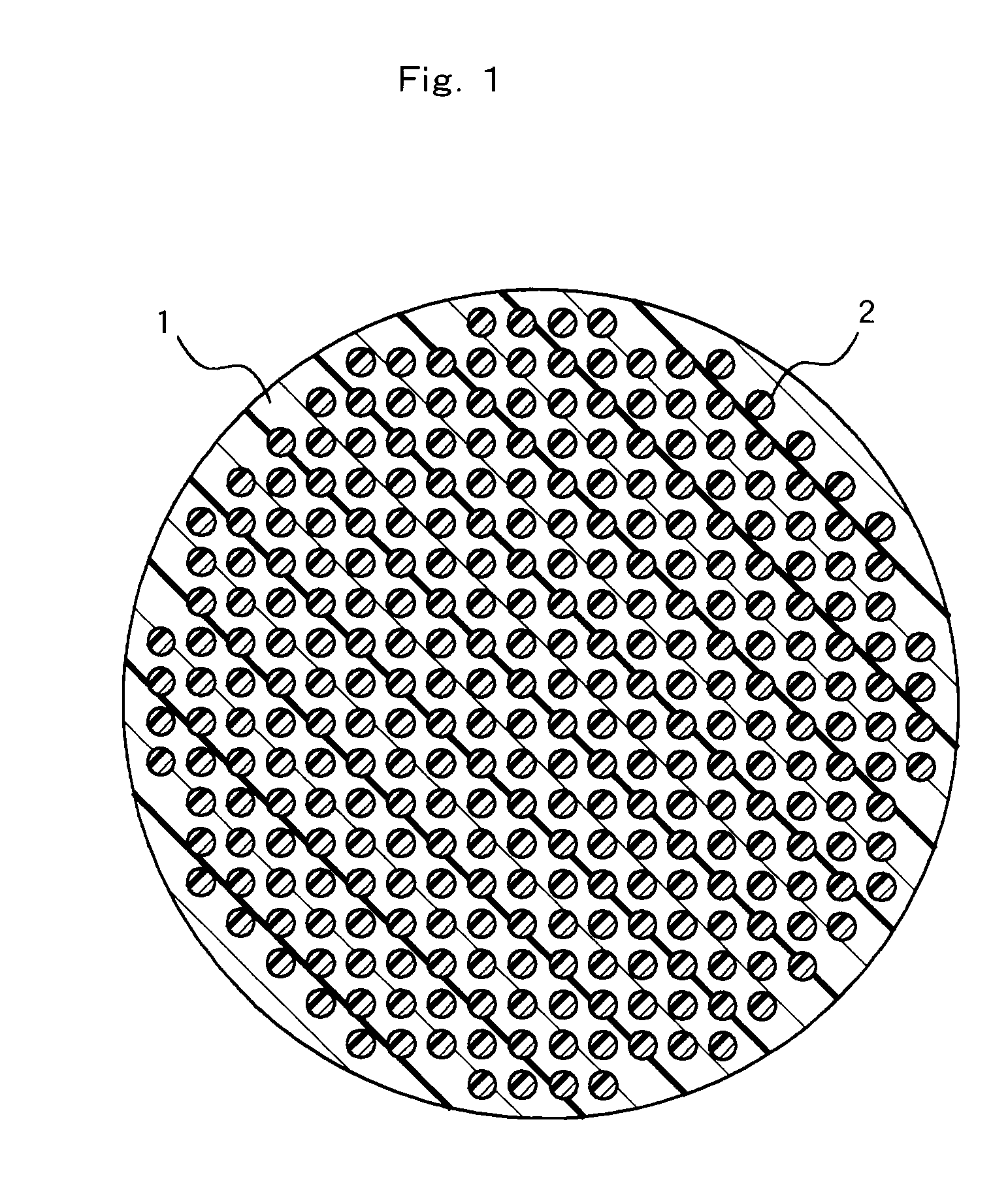Filter material and method for producing the same
a filter material and filter material technology, applied in the field of filter materials, can solve the problems of violent pressure drop due to the dust collected on the surface immediately, difficult to form uniform sheets, and difficulty in forming uniform sheets, etc., to achieve excellent durability, low resistance to liquid passing, and high dust collection efficiency
- Summary
- Abstract
- Description
- Claims
- Application Information
AI Technical Summary
Benefits of technology
Problems solved by technology
Method used
Image
Examples
synthesis example 1
Ethylene-Modified PVA Pellet: PVA-1
[0134]To a 50 L vessel for pressure reaction, equipped with a stirrer, a nitrogen-introducing port, an ethylene-introducing port, and an initiator-adding port, 15.0 kg of vinyl acetate and 16.0 kg of methanol were fed. The mixture was heated to 60° C., and then the atmosphere of the reaction system was replaced with nitrogen gas by bubbling for 30 minutes. Then, ethylene was fed into the reaction vessel in order to adjust the pressure of the reaction vessel to 5.5 kgf / cm2 (5.4×105 Pa). 2,2′-Azobis(4-methoxy-2,4-dimethylvaleronitrile)) (AMV) was dissolved as an initiator in methanol to prepare an initiator solution having a concentration of 2.8 g / L, and the atmosphere of the system was replaced with nitrogen gas by bubbling. The inner temperature of the reaction vessel was adjusted to 60° C., and then 170 ml of the initiator solution was poured into the reaction vessel to start the polymerization reaction. During the polymerization, AMV was continuo...
synthesis examples 2 and 3
Ethylene-Modified PVA Pellets: PVA-2 and PVA-3
[0140]A PVA having physical properties shown in Table 1 was produced by a method according to Synthesis Example 1. To 100 parts of the obtained PVA was added 5 parts of a plasticizer (a compound obtained by adding 2 mol of ethylene oxide to 1 mol of sorbitol on average). Using a biaxial extruder (manufactured by The Japan Steel Works, Ltd., 30 mmφ), the resulting mixture was melted and extruded at a preset temperature of 240° C. and a screw rotation speed of 200 rpm to produce pellets of PVA-2. On the other hand, to 100 parts of the obtained PVA was added 10 parts of the plasticizer. The resulting mixture of PVA was also melted and extruded with a biaxial extruder same as that mentioned above at a preset temperature of 200° C. and a screw rotation speed of 200 rpm to produce pellets of PVA-3.
synthesis example 4
Ethylene-Modified PVA Pellet: PVA-4
[0141]A PVA having physical properties shown in Table 1 was produced by a method according to Synthesis Example 1. Using a biaxial extruder (manufactured by The Japan Steel Works, Ltd., 30 mmφ), the PVA was melted and extruded at a preset temperature of 210° C. and a screw rotation speed of 200 rpm to produce pellets.
[0142][Table 1]
TABLE 1PVAAmount ofunit forSodiumMeltingPelletizationPolymerizationSaponificationUnit formodificationionpointTemperaturePlasticizerdegreedegree (mol %)modification(mol %)(parts)(° C.)(° C.)(parts)PVA-135098.9ethylene8.50.0008211230—PVA-221099.6none—0.022282405PVA-385088.5ethylene5.50.0000618120010PVA-434097.0ethylene16.00.007188210—
PUM
| Property | Measurement | Unit |
|---|---|---|
| Temperature | aaaaa | aaaaa |
| Temperature | aaaaa | aaaaa |
| Length | aaaaa | aaaaa |
Abstract
Description
Claims
Application Information
 Login to View More
Login to View More - R&D
- Intellectual Property
- Life Sciences
- Materials
- Tech Scout
- Unparalleled Data Quality
- Higher Quality Content
- 60% Fewer Hallucinations
Browse by: Latest US Patents, China's latest patents, Technical Efficacy Thesaurus, Application Domain, Technology Topic, Popular Technical Reports.
© 2025 PatSnap. All rights reserved.Legal|Privacy policy|Modern Slavery Act Transparency Statement|Sitemap|About US| Contact US: help@patsnap.com


